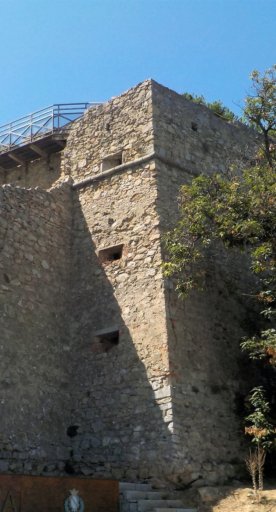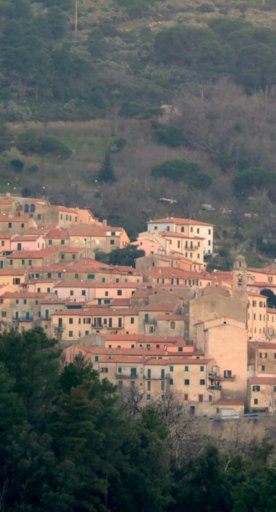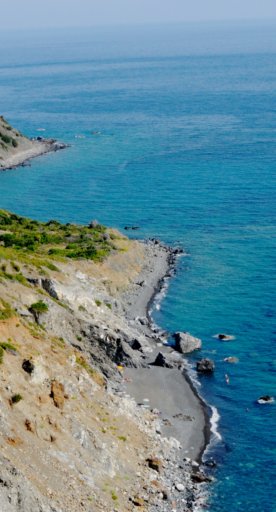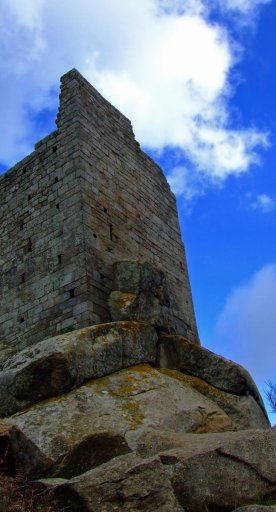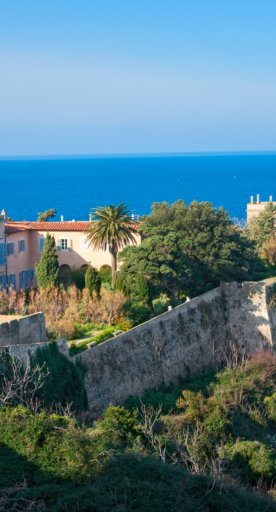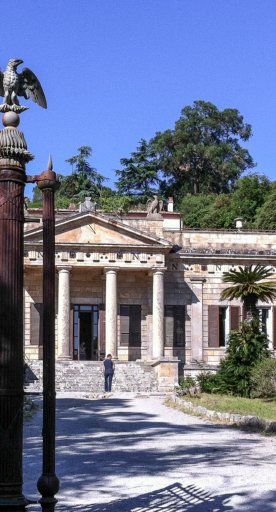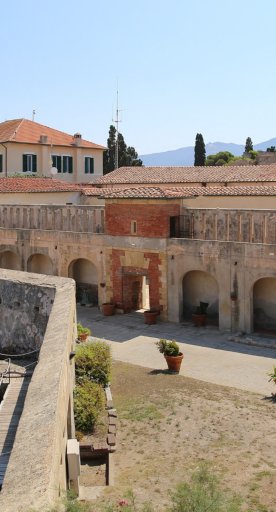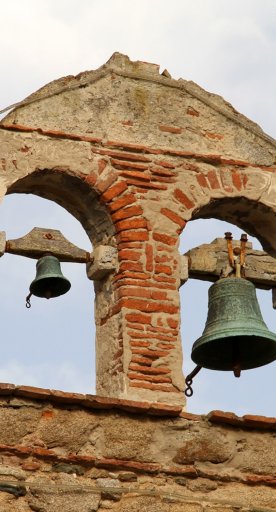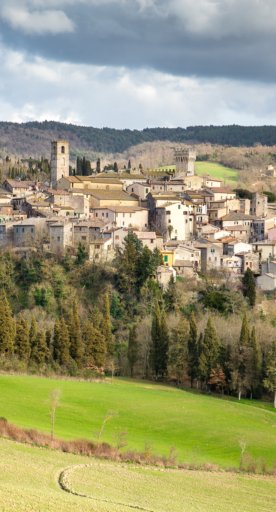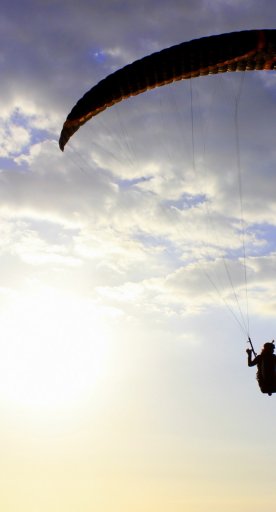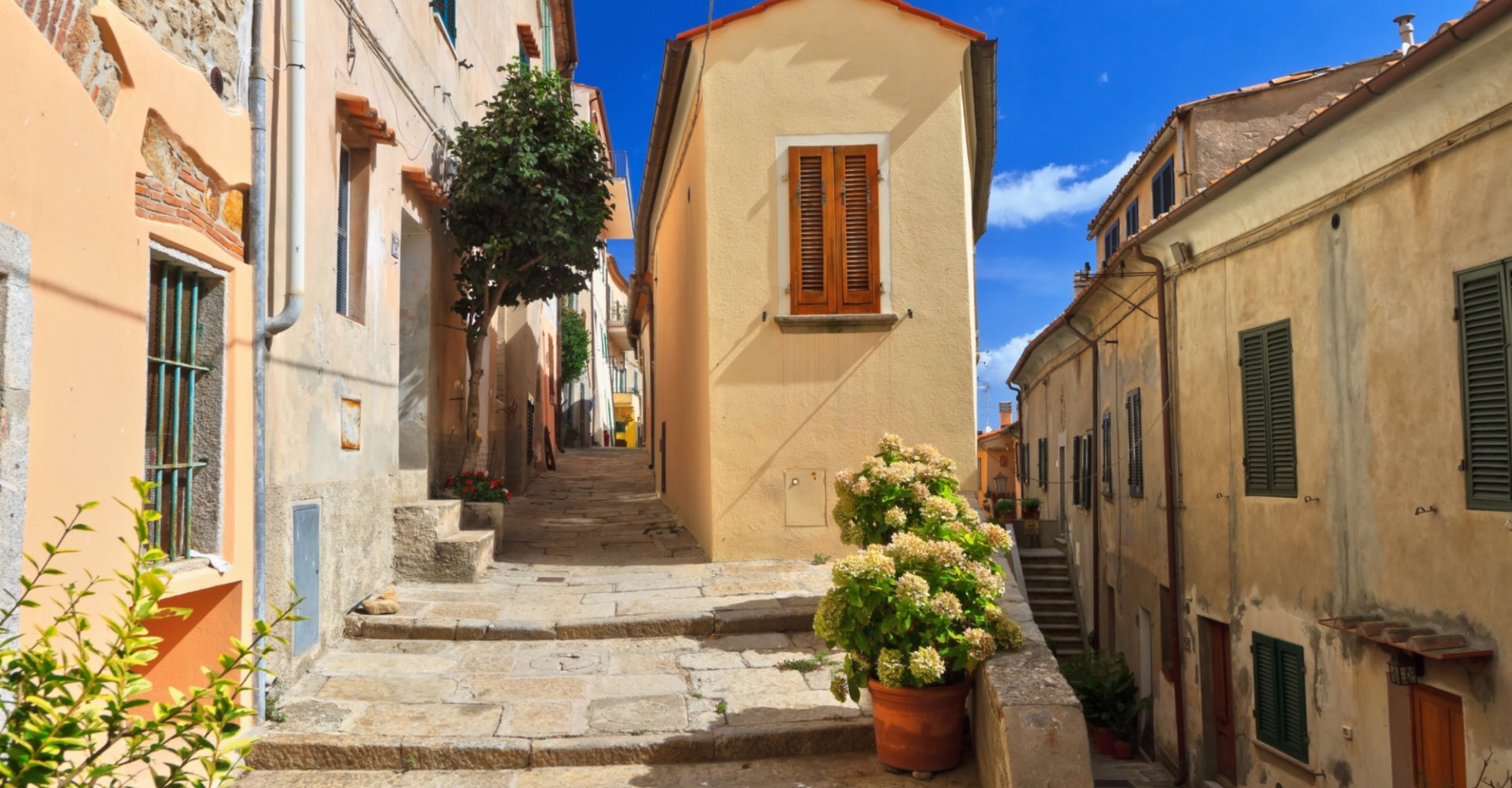
Marciana
Stay between the sea and the mountains, in the oldest village on Elba island
The noble Appiani family, during their dominion from the end of the fourteenth century to the end of the sixteenth century, chose Marciana as their residence and the town experienced a period of considerable development, starting with the expansion of its fortress, the most protected of the entire island, placed in defense of the foundry and the mint.
Immersed in lush vegetation of holm oaks, pines and chestnuts, Marciana exudes a unique atmosphere compared to the rest of the island, thanks to its always cool, almost mountainous climate, but with the blue of the sea just five kilometers away.
What to see in Marciana
Among the many attractions to see in the Marciana area is the imposing Pisan Fortress enclosed by four towers, built by the Pisans in the twelfth century and reinforced by the Appiani in the mid-fifteenth century. Once used by the population as a refuge during pirate raids, today it characterizes the upper part of the town and from its walkway you can admire a magnificent panorama that goes from the summit of Monte Capanne (1019 m) to the blue waters of the coast of the island.
Don't miss out on the two churches: the Romanesque parish church of San Lorenzo, destroyed by the Turks in 1554 and today recognized as a national monument; and that of San Cerbone, erected in honor of the saint who retired here from Populonia in the sixth century to escape persecution by the Lombards.
For those wishing to deepen their knowledge of Marciana's historic past and beyond, we recommend a visit to the Civic Archaeological Museum, housed in the seventeenth-century Palazzo del Pretorio.
Here, you can find preserved artefacts from the prehistory and proto-history of the Island of Elba. In addition to those from the Etruscan and Roman times, there's a section dedicated to the wrecks found in the depths of Procchio and the finds of the Villanovan culture, which come from various Elban archaeological sites such as the settlements of Monte Giove and Madonna del Monte and the Etruscan fortress of Monte Castello di Procchio.
Among the many attractions to see in the Marciana area is the imposing Pisan Fortress enclosed by four towers, built by the Pisans in the twelfth century and reinforced by the Appiani in the mid-fifteenth century. Once used by the population as a refuge during pirate raids, today it characterizes the upper part of the town and from its walkway you can admire a magnificent panorama that goes from the summit of Monte Capanne (1019 m) to the blue waters of the coast of the island.
Don't miss out on the two churches: the Romanesque parish church of San Lorenzo, destroyed by the Turks in 1554 and today recognized as a national monument; and that of San Cerbone, erected in honor of the saint who retired here from Populonia in the sixth century to escape persecution by the Lombards.
For those wishing to deepen their knowledge of Marciana's historic past and beyond, we recommend a visit to the Civic Archaeological Museum, housed in the seventeenth-century Palazzo del Pretorio.
Here, you can find preserved artefacts from the prehistory and proto-history of the Island of Elba. In addition to those from the Etruscan and Roman times, there's a section dedicated to the wrecks found in the depths of Procchio and the finds of the Villanovan culture, which come from various Elban archaeological sites such as the settlements of Monte Giove and Madonna del Monte and the Etruscan fortress of Monte Castello di Procchio.
Nearby
The beautiful medieval village of Poggio Terme is worth a visit. Surrounded by woods of holm oaks and chestnut trees, you'll find the source of mineral water Fonte di Napoleone, so called because even the Emperor appreciated its beneficial effects, used for the treatment of uricemia and stones. There is a bottling plant, but it's also possible to stock up freely from a drinking fountain.
A distinctive feature of the Marciana area is the previously mentioned Monte Capanne, the highest peak on the island. From Marciana, the climb of over 1000 meters of mountain can be attempted either on foot, following paths marked by the C.A.I., or by means of a comfortable cableway, that's available in the summer season. For those interested in mineralogy it may be useful to know that magnificent crystals of tourmaline and beryl are extracted from Monte Capanne.
The Sanctuary of the Madonna del Monte is on the northern slope of the hill. A place of worship since the fourteenth century, the current structure was built in 1595 and took on its present form in 1799 after several restorations.
As in the rest of the island, the territory of Marciana is also characterized by the presence of some notable slopes to the sea from which you can get to the sandy beaches of Paolina, Procchio and Spartaia, to the mixed sand and rocks of Sant'Andrea, to the rocks of Punta Nera and Chiessi and to the gravel and rocks of Pomonte and Patresi.
The more experienced can also reach Chiessi on foot, following a fairly difficult but beautiful path, with views of Capraia and Corsica.
The beautiful medieval village of Poggio Terme is worth a visit. Surrounded by woods of holm oaks and chestnut trees, you'll find the source of mineral water Fonte di Napoleone, so called because even the Emperor appreciated its beneficial effects, used for the treatment of uricemia and stones. There is a bottling plant, but it's also possible to stock up freely from a drinking fountain.
A distinctive feature of the Marciana area is the previously mentioned Monte Capanne, the highest peak on the island. From Marciana, the climb of over 1000 meters of mountain can be attempted either on foot, following paths marked by the C.A.I., or by means of a comfortable cableway, that's available in the summer season. For those interested in mineralogy it may be useful to know that magnificent crystals of tourmaline and beryl are extracted from Monte Capanne.
The Sanctuary of the Madonna del Monte is on the northern slope of the hill. A place of worship since the fourteenth century, the current structure was built in 1595 and took on its present form in 1799 after several restorations.
As in the rest of the island, the territory of Marciana is also characterized by the presence of some notable slopes to the sea from which you can get to the sandy beaches of Paolina, Procchio and Spartaia, to the mixed sand and rocks of Sant'Andrea, to the rocks of Punta Nera and Chiessi and to the gravel and rocks of Pomonte and Patresi.
The more experienced can also reach Chiessi on foot, following a fairly difficult but beautiful path, with views of Capraia and Corsica.
Events
In Marciana, the Palio di Sant’Agabito is celebrated each year on August 18. According to tradition, the festival was established by Donna Paola, governor of Marciana, to give a moment of celebration to her subjects. The date was chosen to honor her father, on the day of his death.
Throughout the day, folkloristic games and shows are held in the square, in the Fortress and throughout the historic center, which also hosts a historical parade.
At the end of October, Chestnut Week is held, dedicated to the fruit that's a symbol of the culture and gastronomy of the mountain areas of the Marciana area.
In Marciana, the Palio di Sant’Agabito is celebrated each year on August 18. According to tradition, the festival was established by Donna Paola, governor of Marciana, to give a moment of celebration to her subjects. The date was chosen to honor her father, on the day of his death.
Throughout the day, folkloristic games and shows are held in the square, in the Fortress and throughout the historic center, which also hosts a historical parade.
At the end of October, Chestnut Week is held, dedicated to the fruit that's a symbol of the culture and gastronomy of the mountain areas of the Marciana area.
Typical dishes and products
In Marciana, you can taste the typical dishes of Elba and the Archipelago of the Tuscan Islands.
Some of these dishes are a derivation of the meals that the locals of the coastal villages once brought with them when they left to go to to work in the countryside or in the mines.
Among these is Sburrita, an Elban soup based on simple fish and flavored with herbs or vegetables, that was originally prepared with the raw ingredients available on the spot, at a time when the connections between the different areas of the island were not as easy as they are now. Examples include the original recipes that use bogacciole in Marciana and cod in Rio Marina.
In Marciana, you can taste the typical dishes of Elba and the Archipelago of the Tuscan Islands.
Some of these dishes are a derivation of the meals that the locals of the coastal villages once brought with them when they left to go to to work in the countryside or in the mines.
Among these is Sburrita, an Elban soup based on simple fish and flavored with herbs or vegetables, that was originally prepared with the raw ingredients available on the spot, at a time when the connections between the different areas of the island were not as easy as they are now. Examples include the original recipes that use bogacciole in Marciana and cod in Rio Marina.
